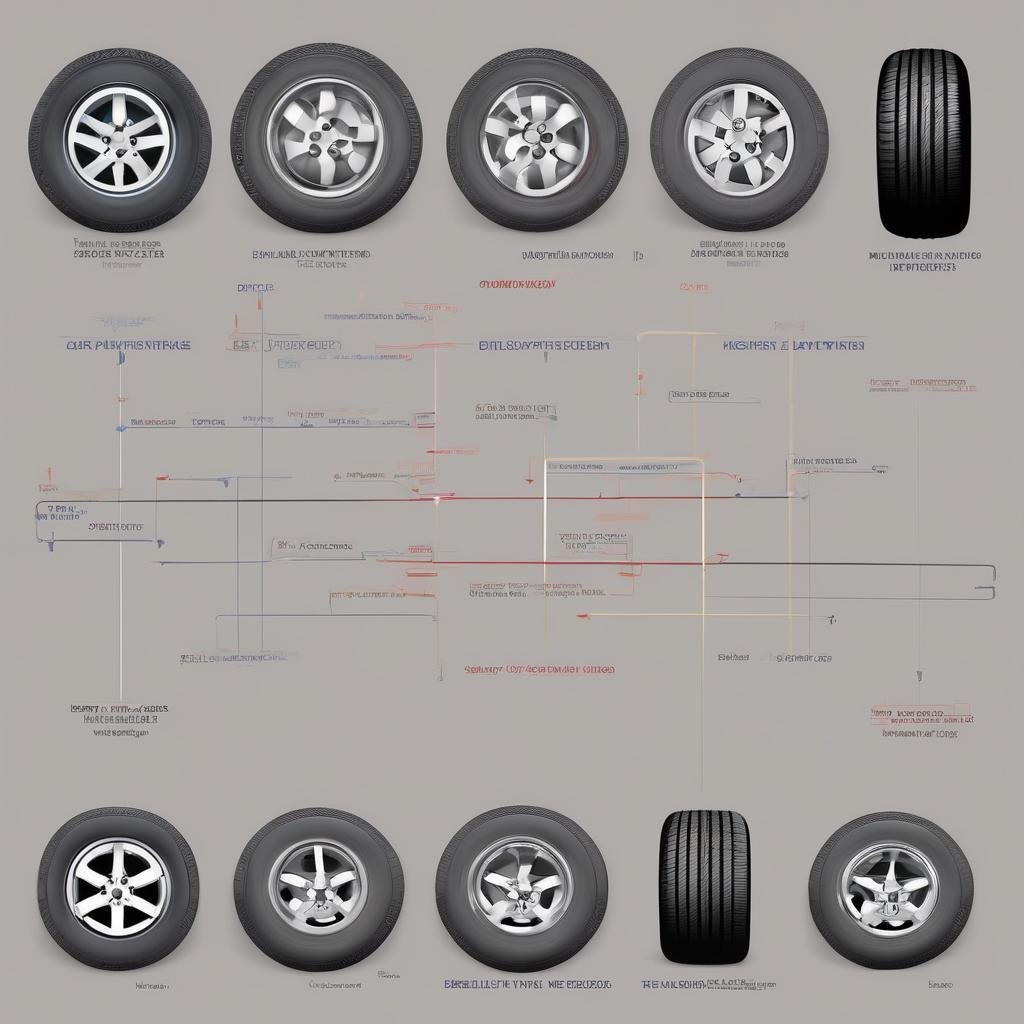
Tire Rotation Patterns
“`html
Tire Rotation Patterns: Recommended Sequences for FWD, RWD, and AWD Vehicles
Introduction
Regular tire rotation is one of the most important maintenance tasks for extending the life of your tires and ensuring optimal vehicle performance. Different drivetrain configurations (FWD, RWD, AWD) require specific rotation patterns to account for uneven wear patterns. This comprehensive guide explains the recommended tire rotation sequences for each vehicle type, helping you maintain even tread wear and maximize tire longevity.
Most manufacturers recommend rotating your tires every 5,000 to 8,000 miles, though you should always consult your owner’s manual for specific recommendations. Proper rotation helps prevent premature wear, improves fuel efficiency, and maintains better handling characteristics. Before rotating your tires, it’s also a good idea to check tire pressure to ensure all tires are properly inflated.
Front-Wheel Drive (FWD) Vehicle Rotation Patterns
Front-wheel drive vehicles typically experience the most wear on their front tires since these handle both steering and power delivery. The recommended rotation pattern helps distribute this wear more evenly across all four tires.
Standard FWD Rotation Pattern
The most common rotation pattern for FWD vehicles is the “forward cross”:
- Move the front tires straight back to the rear axle
- Cross the rear tires to the front (left rear to right front, right rear to left front)
This pattern helps even out the accelerated wear that occurs on front tires while accounting for the different wear patterns between front and rear positions.
Alternative FWD Patterns
For vehicles with directional tires (which must remain on the same side of the vehicle), use a front-to-rear pattern:
- Front left moves to rear left
- Front right moves to rear right
- Rear tires move straight forward to their respective front positions
Rear-Wheel Drive (RWD) Vehicle Rotation Patterns
Rear-wheel drive vehicles place more stress on the rear tires for acceleration, while the front tires handle steering forces. This creates different wear patterns that require specific rotation sequences.
Standard RWD Rotation Pattern
The recommended pattern for most RWD vehicles is the “rearward cross”:
- Move the rear tires straight forward to the front axle
- Cross the front tires to the rear (left front to right rear, right front to left rear)
This pattern helps balance the wear between tires that primarily handle acceleration (rear) and those that handle steering (front).
Performance Vehicle Considerations
High-performance RWD vehicles may require more frequent rotations (every 3,000-5,000 miles) due to aggressive driving styles that accelerate tire wear. Some owners prefer keeping the best tires on the rear for stability, even if it means replacing them more frequently.
All-Wheel Drive (AWD) Vehicle Rotation Patterns
AWD systems distribute power to all four wheels, creating more complex wear patterns that require careful rotation strategies to maintain optimal performance.
Standard AWD Rotation Pattern
The most common AWD rotation pattern is the “X-pattern”:
- Left front moves to right rear
- Right front moves to left rear
- Left rear moves to right front
- Right rear moves to left front
This aggressive cross pattern helps ensure even wear across all four tires, which is critical for AWD systems that require closely matched tread depths.
Directional Tire Considerations
For AWD vehicles with directional tires (marked with rotation arrows), you must use a front-to-rear same-side pattern:
- Front left moves to rear left
- Front right moves to rear right
- Rear tires move straight forward to their respective front positions
This maintains the proper tire rotation direction while still helping to even out wear patterns.
Additional Tire Rotation Considerations
Beyond the basic patterns, several factors can influence your rotation strategy:
Full-Size Spare Tires
If your vehicle has a full-size matching spare, include it in your rotation pattern (typically using a 5-tire rotation). This helps keep all five tires wearing evenly and extends their overall life.
Tire Wear Monitoring
Always inspect your tires during rotation for:
- Uneven wear patterns (indicating alignment issues)
- Tread depth variations
- Signs of damage or irregular wear
Seasonal Tire Changes
If you use seasonal tires (winter/summer), consider the rotation pattern when swapping them. Some owners prefer to rotate when changing seasonal tires to simplify maintenance.
Conclusion
Proper tire rotation is essential for maximizing tire life, maintaining vehicle performance, and ensuring safety on the road. By following the recommended patterns for your specific drivetrain (FWD, RWD, or AWD), you can distribute wear more evenly across all tires. Remember that these general patterns may need adjustment based on your specific vehicle, tire type, and driving conditions. Always consult your owner’s manual for manufacturer-specific recommendations, and consider having rotations performed by a professional if you’re unsure about the proper procedure for your vehicle.
Regular rotations combined with proper inflation (don’t forget to check tire pressure regularly) and alignment checks will help you get the most value from your tire investment while keeping your vehicle performing at its best.
Frequently Asked Questions
How often should I rotate my tires?
Most manufacturers recommend every 5,000-8,000 miles, but check your owner’s manual for specific recommendations. More frequent rotations may be needed for high-performance vehicles or severe driving conditions.
Can I rotate my tires myself?
Yes, if you have the proper equipment and knowledge. However, many owners prefer having rotations done during oil changes or other maintenance for convenience.
What if my tires show uneven wear despite regular rotations?
Uneven wear may indicate alignment issues, suspension problems, or improper inflation. Have your vehicle inspected by a professional if you notice significant uneven wear patterns.
Do I need to rotate tires if they’re non-directional and the same size all around?
Yes, rotation is still recommended as different positions on the vehicle still experience different wear patterns regardless of tire specifications.
“`
